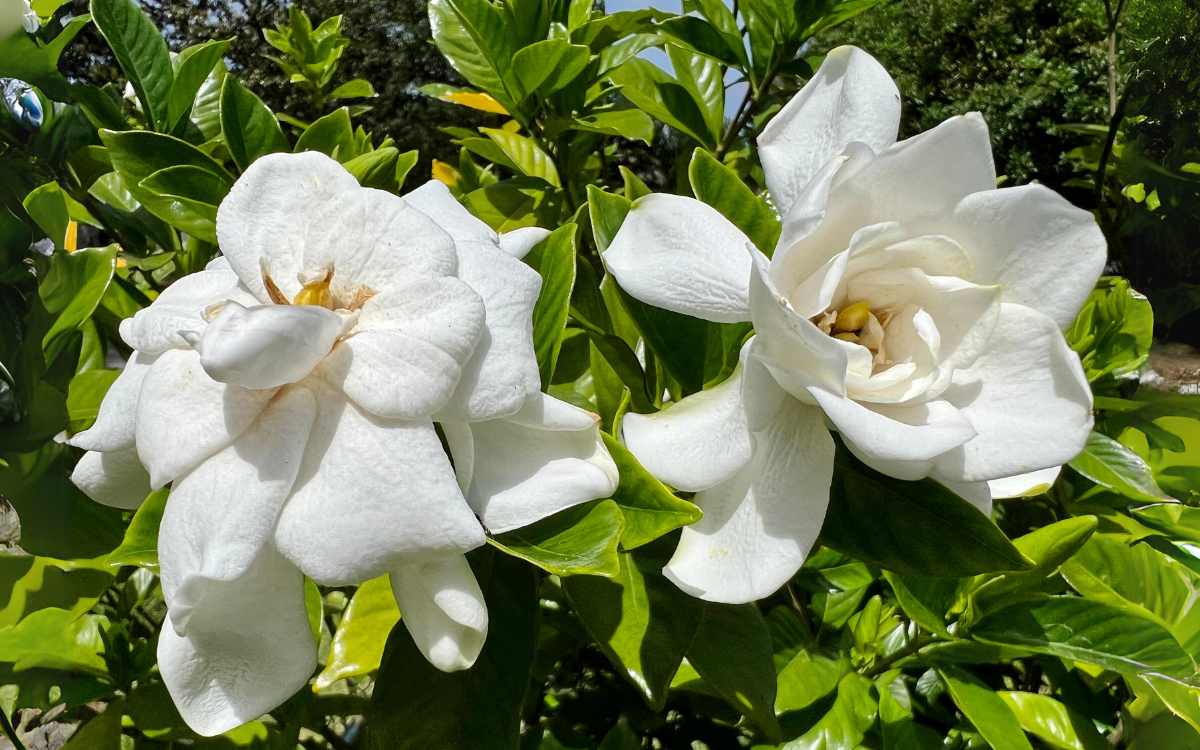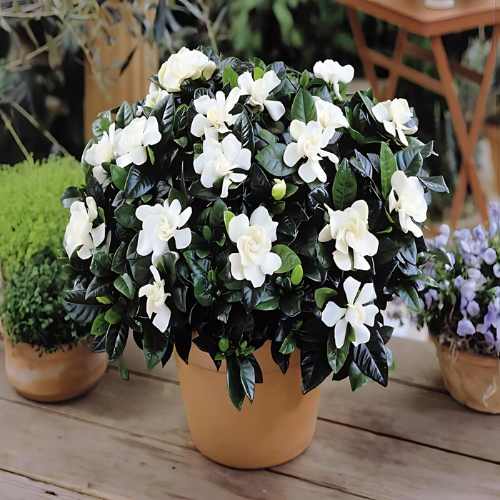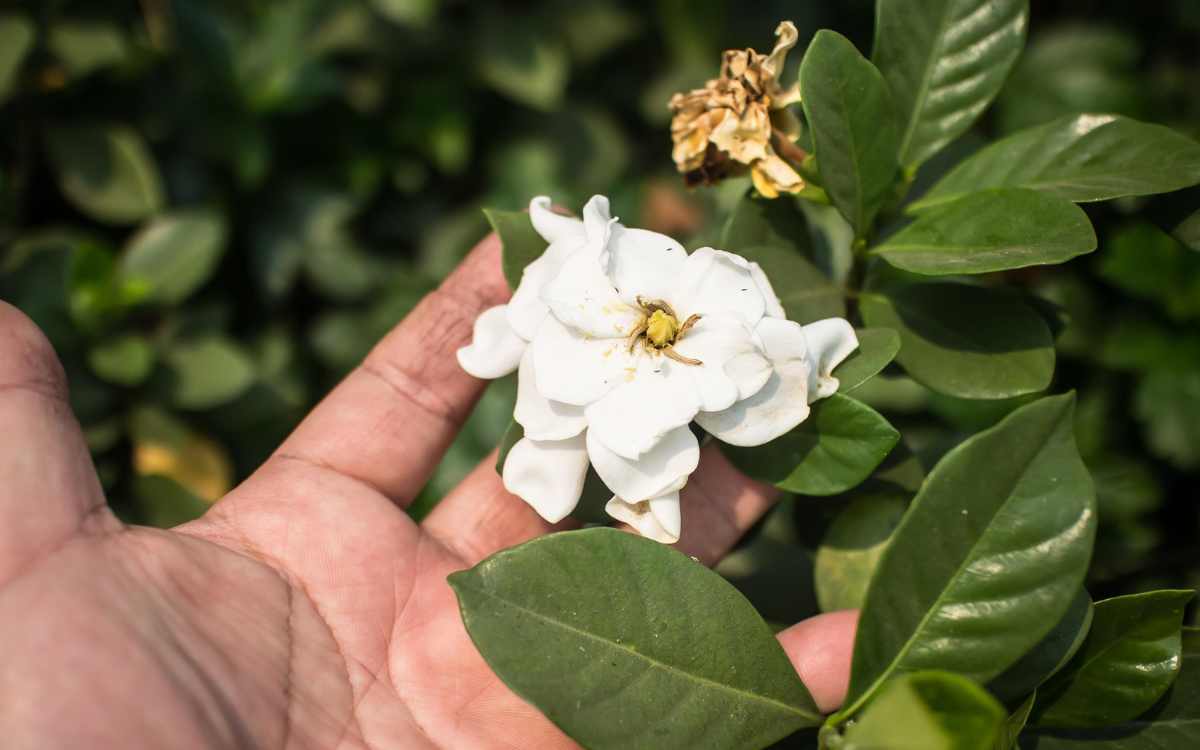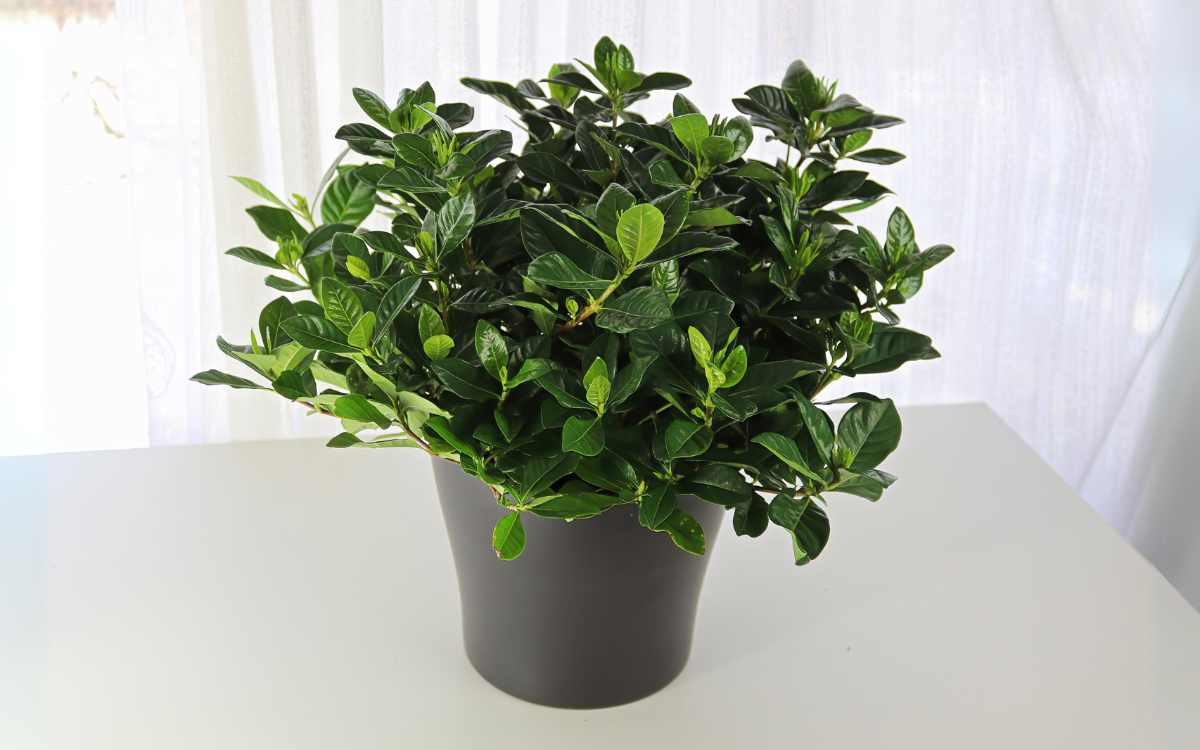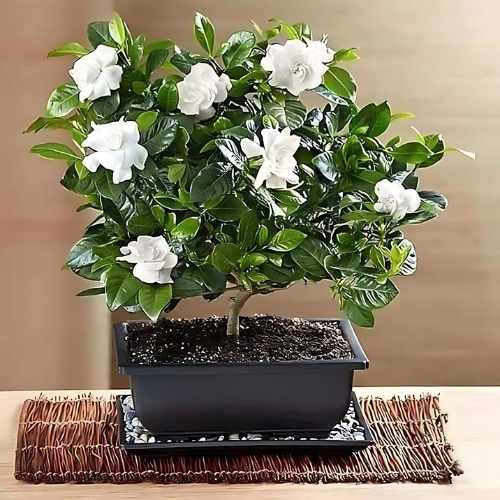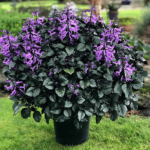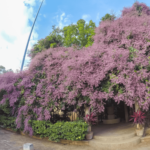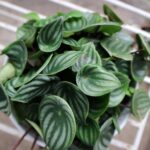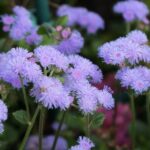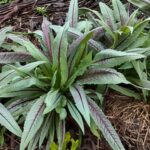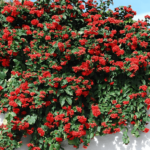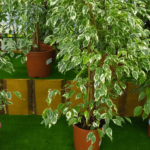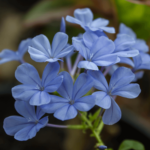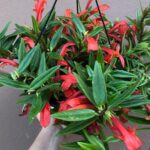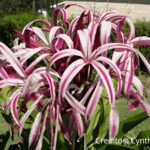The gardenia is a fragrant plant native to the tropical regions of East Asia, including southern China and Taiwan. Its fragrance is often used in perfumes and soaps.
With the species Gardenia jasminoides (Cape jasmine) being the most popular, gardenias are not only beautiful and fragrant but are also used in Chinese medicine.
Keep reading, because in this text, you will learn about the characteristics and how to cultivate this plant.
Plant Characteristics
The gardenia is characterized by its large, white, intensely aromatic flowers, which gradually become creamy over time.
These flowers are not only visually attractive but are also used in a variety of culinary recipes such as jellies, teas, and salads, as well as being essential in the production of essential oils and perfumes.
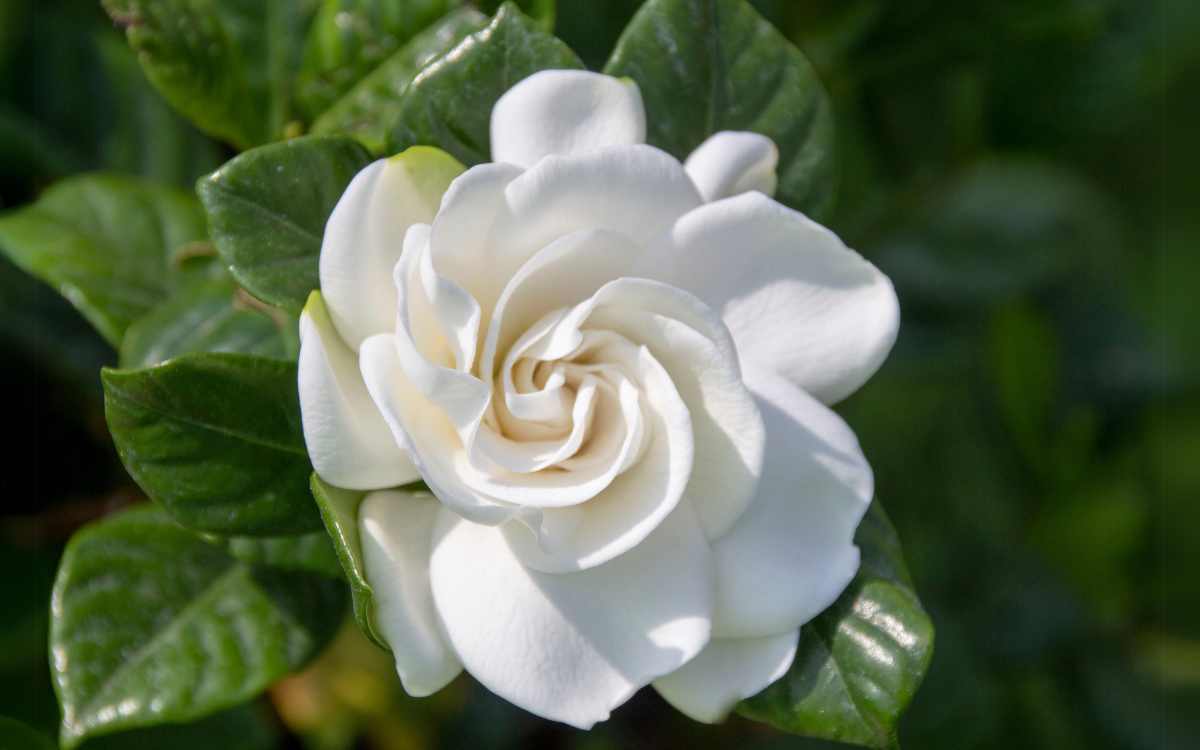
The plant can reach up to two meters in height and has glossy, leathery leaves.
The medicinal properties of gardenia are also notable, including its traditional use in Chinese medicine to treat fever, inflammation, and respiratory infections, although these uses lack robust scientific evidence.
The plant is also used in aromatherapy sessions for tranquilizing effects, which can significantly improve sleep quality.
NOTE: the medicinal information about this plant was added to this article just as a curiosity, before using any plant as a medicine, visit a doctor.
How to Care for Gardenia
Temperature
Gardenias thrive in temperatures that remain between 21-24°C (70-75°F).
It is crucial to protect these plants from extremes of both cold and heat. During the winter or in colder climates, it is recommended to cover gardenias or move them indoors where temperatures are more controlled.
On the other hand, in very hot regions, providing adequate shade during the hottest hours of the day can prevent damage caused by excessive heat.
The gardenia is sensitive to sudden temperature changes, so environments with stable temperatures are ideal.
Humidity
Humidity is a crucial factor for the healthy development of gardenia. These plants require a moist environment to grow well.
To maintain the right humidity, you can regularly spray the leaves or keep the plant on a tray of moistened pebbles.
Avoiding overly dry conditions is equally important, especially in indoor environments where the air tends to be drier.
Also read these contents:
- Blood Lily (Scadoxus Multiflorus): How to Grow and Care
- Congea Tomentosa (Wooly Congea): Characteristics and Care
- Clitoria Ternatea (Butterfly Pea): Characteristics and Care
- Maidenhair fern (Adiantum spp.) – Care Guide
- Tillandsia Air Plants: Species and Care (With Photos)
Lighting
Gardenia requires adequate light for the formation of flower buds and to ensure good flowering.
It benefits from indirect or filtered sunlight.
In warmer climates, the plant should be positioned to receive direct sunlight only during the cooler morning hours, avoiding intense midday light.
In cooler regions, plants can be exposed to full sun, provided they are protected from frost.
Ideal Soil
The ideal pH for the soil where gardenias will be grown should be in the range of 5 to 6.
To achieve and maintain this acidity, the addition of sulfur or the use of acidic substrates such as peat is recommended.
Gardenia also needs soil that offers excellent drainage.
Compacted soils or those that retain too much water can lead to root problems, such as rotting, which is detrimental to the plant.
To improve drainage, the incorporation of coarse sand, perlite, or vermiculite into the soil is advisable. These materials help keep the soil structure loose and allow water to drain efficiently.
Soil Preparation
When preparing the soil for planting gardenia, it is important to dig a hole that is substantially larger than the plant’s root ball.
This helps ensure that the roots have enough space to expand without restrictions. The excavated soil should be enriched with organic compounds such as humus or well-rotted manure, which not only improve the texture of the soil but also add essential nutrients.
For planting in pots, the potting substrate should include a mix of soil for acid-loving plants with additions of peat moss and humus to maintain the necessary moisture without waterlogging the roots.
How to Water
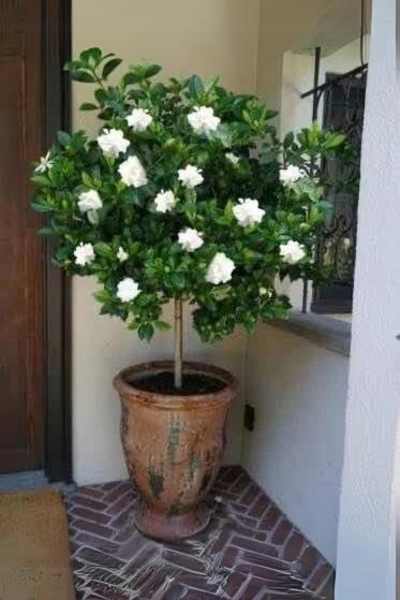
Gardenia should be watered regularly, but the frequency and amount of water needed can vary with environmental conditions such as temperature and relative humidity of the air.
A good practice is to check the moisture of the soil before watering again.
The top layer of the soil should start to dry out between waterings, but the soil should not become completely dry.
Water the plant deeply, allowing the water to reach the deeper roots, and then let the excess water drain completely.
This usually means watering the plant once or twice a week, depending on the local climate and the season.
Care During Watering
- When watering gardenia, it is important to apply water directly to the base of the plant, avoiding wetting the leaves and flowers. This minimizes the risk of fungal diseases that can develop on wet leaves.
- Use room temperature water, preferably without chlorine, to avoid changes in the soil pH that could adversely affect the plant.
- To prevent root rot and waterlogging problems, make sure that pots have adequate drainage and that the soil is well-draining.
- When planting in the ground, choose an area that does not retain standing water. If necessary, improve drainage by adding materials like coarse sand or perlite to the soil.
How to Fertilize
Correct fertilization is crucial to ensure that gardenia grows healthily and produces flowers. This process involves providing essential nutrients in adequate amounts and at the right time, respecting the acidic characteristics that gardenia requires from the soil.
Recommended Fertilizers
For gardenia, fertilizers with an acidic formulation, such as fish emulsion, bone meal, and specific fertilizers for acid-loving plants, are advisable.
These products help maintain the soil pH within the ideal range for gardenia, which is between 5.0 and 6.5, thus promoting optimal nutrient absorption.
The best time to start fertilizing gardenia is in the spring, when the plant begins its active vegetative cycle, and continue until the end of summer.
It is recommended to apply the fertilizer every one or two months during this period.
Method of Application
When fertilizing gardenia, distribute the fertilizer evenly around the stem, keeping a safe distance from the roots to avoid chemical burns.
After applying the fertilizer, it is crucial to water abundantly, so that the nutrients dissolve and are carried to the roots. This also helps prevent the build-up of salts in the soil, which can be toxic to the plant.
It is essential to avoid over-fertilizing, as excess can lead to burns on the leaves and flowers, and contribute to the harmful accumulation of salts in the soil.
Planting and Replanting
The most recommended period for planting gardenias is in early spring or during the fall.
These seasons provide milder temperatures, which help the plant to establish itself without the stress of excessive heat or intense cold.
When choosing a location for planting, opt for an area that receives filtered sunlight or partial shade, as gardenia does not tolerate intense direct sunlight, which can burn its leaves and flowers.
Planting in Pots
When planted in pots, gardenias require containers with at least 50 cm in diameter and height to allow for proper growth.
Pots must have efficient drainage to prevent root waterlogging, which can lead to fungal diseases.
It is important to monitor the growth of the roots and, if they begin to come out of the bottom of the pot, transfer the plant to a larger container.
Pots with gardenias are ideal for decorating patios, decks, or home entrances, where the fragrance of the flowers can be enjoyed.
However, during the colder months, these pots should be moved to protected locations, such as greenhouses or enclosed porches, to protect the plants from extreme temperatures.
Gardenia is not suitable for hanging, as its growth mode and water needs require planting in flat soil.
Read too:
- Vanilla Orchid: How To Plant, Care and Grow (With Photos)
- China Rose (Rosa chinensis): 8-Step Care Guide
- Fishbone Cactus (Selenicereus anthonyanus) – Care Guide
- Japanese Fern Tree – How to Care and Characteristics
- Lipstick Plant – How to Care, Prune and Fertilize
Spacing Between Plants
The ideal spacing between plants should be one to two meters, depending on the maximum size expected for the specific variety of gardenia.
This ensures sufficient space for full growth and development, allowing each plant to receive adequate sunlight and air circulation.
Replanting
Replanting is necessary when gardenia grows too much for its current space.
Carefully remove the plant from the pot, remove the old soil, and trim the damaged roots before replanting in a new pot or location in the garden.
Replanting should be done carefully to avoid damaging the sensitive roots of the plant.
Pruning
The best time to prune gardenia is right after the end of flowering.
This allows the plant to recover and prepare for the next growth cycle without the risk of accidentally removing the floral buds that form on branches from the previous year.
Pruning during this period helps avoid the plant spending energy maintaining branches that will not contribute to its beauty or health.
Necessary Tools
To prune gardenias, it is essential to use clean and sharp pruning tools.
Hand pruning shears are recommended for precise cuts on thinner branches, while hand saws may be needed for thicker or more robust branches.
It is crucial that the tools be disinfected before and after use to prevent the transmission of diseases between plants.
Pruning Techniques
When pruning, the goal is to remove dead, diseased, or damaged branches, as well as to reduce the size of the plant to maintain its shape and promote healthy growth.
Remove any plant material that appears to be decaying or that is clearly dead.
This not only improves the appearance of the plant but also prevents the spread of diseases.
Pruning for Formation
Pruning can also be used to shape gardenia and control its size.
Avoid excessive or too deep cuts, which can stress the plant.
A general rule is never to remove more than one-third of the plant’s growth at once. Make clean cuts, close to a leaf node, to encourage the development of new branches.
How to Propagate
The propagation of gardenia can be carried out using different techniques:
Cuttings
Cutting is the most common technique for propagating gardenia, and it is ideal to do it during the spring or early summer, when the plant is in its most active growth period.
- For this, select cuttings of about 15 cm in length, preferably from branches that are not flowering.
- Remove the lower leaves and dip the base in a rooting hormone to stimulate root development.
- Plant the cuttings in a light and well-drained soil, composed of sand, peat, and organic compost.
- Keep the soil moist, but not waterlogged, and place the cuttings in an area with indirect lighting and protected from strong winds.
Propagation by Seeds:
Although less common due to genetic variability and a lower germination rate, propagation by seeds can be an interesting alternative.
- Collect seeds from ripened fruits in the fall and store them in a cool, dry place during the winter.
- In early spring, sow them in germination trays with a mix of peat and perlite, keeping the substrate lightly moist and in controlled temperature conditions, about 21°C (70°F).
- Cover the seeds lightly with a thin layer of the same substrate and keep the environment moist with the help of a plastic cover to retain moisture.
Care for Seedlings
Regardless of the method chosen, it is important to maintain seedlings in ideal conditions to ensure good development.
Keep the seedlings in an area with good light, but protected from direct sunlight, and monitor regularly to ensure the soil is adequately moist.
Be on the lookout for pests and diseases, and keep the environment clean to prevent infestations.
Ideal Time for Separation
When seedlings develop a robust root system and are ready for transplanting, usually a few months after propagation, prepare the new location or pot with a similar substrate to that used for rooting.
Transplant the seedlings carefully to avoid damaging the roots and acclimate them gradually to the new environment.
Pests
Gardenias often face attacks from aphids and scale insects.
Aphids are small sucking insects that can cause leaf deformation and reduce the overall vigor of the plant.
Scale insects, on the other hand, adhere to the leaves and branches, excreting a sticky substance known as honeydew, which can attract the formation of fungi such as sooty mold.
To combat them, the use of a solution of water with mild soap applied directly to the insects, followed by a gentle cleaning with a sponge, is recommended.
Additionally, neem oil is an effective option for controlling these pests without harming the plant.
Diseases
Two of the most common diseases affecting gardenias are sooty mold and powdery mildew.
Sooty mold results from the growth of fungi on the honeydew left by scale insects, forming a black layer on the leaves that inhibits photosynthesis.
Powdery mildew manifests as grayish spots and a powdery white coating on the leaves.
Both conditions can be mitigated by keeping the plant well cared for and free of pests. In cases of fungal infection, the use of specific fungicides may be necessary.

